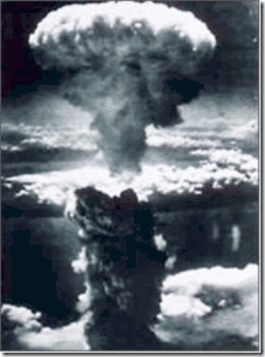Remembering Manhattan
The nuclear age began in a small laboratory underneath the football field at the University of Chicago in 1942. There, physicist Enrico Fermi conducted the world's first controlled nuclear reaction. Just three years later, World War II ended with the detonation of nuclear bombs over Hiroshima and Nagasaki in Japan. The scientists of the top-secret Manhattan Project did their job terrifyingly well.
Even before the Manhattan Project, scientists knew that certain elements were unstable, slowly emitting energy as their atomic state changed over time. Some of these radioactive elements, uranium and plutonium in particular, could undergo nuclear fission. That is, the nucleus of their atoms could be split into two equal fragments, releasing large amounts of energy and a few stray neutrons, too. If these stray neutrons could strike and split other atoms, physicists figured, you could create a sustained nuclear reaction.
The problem is that it's very difficult to create just the right conditions for a sustained reaction. The solution, scientists found, is to concentrate a sufficient mass of radioactive material together, so that when one atom splits, stray neutrons stand a good chance of striking and splitting some neighbors, which then release more neutrons to continue the chaos. The mass necessary to achieve this chain reaction is known as "critical mass."
Yet it's not enough to have a critical mass of uranium or plutonium. You need the right kind of uranium or plutonium, as each exists in several different isotopes. Isotopes of an element may have the same chemical properties, but because they have different numbers of neutrons in their nucleus, they have different radioactive properties.
Only uranium-235 and plutonium-239 have the right nuclear stuff for sustainable fission. You can mine uranium ore out of the earth, but almost all of the ore is uranium-238, and you'll need to mine huge amounts to extract even a little U-235. The right plutonium is even harder to get, because it doesn't exist in the earth at all. It has to be produced in sophisticated nuclear reactors. Only after these difficult and expensive processes will you have the purified "weapons-grade" material needed for a nuclear weapon.
The thermonuclear weapons in modern arsenals are even more complex--not to mention a thousand times more powerful than the bomb exploded over Hiroshima. First detonated in 1952, thermonuclear, or hydrogen, bombs use the intense heat of a fission reaction to start a second, fusion reaction, in which hydrogen isotopes combine to form helium. To fit together, the hydrogen atoms must lose mass. The mass becomes energy, and kilotons of destructive force become megatons.
Nightmare Scenario
A 10-megaton nuclear weapon (current U.S. warhead strength) creates an explosion equivalent to the detonation of 10 million tons of TNT. That's 10 million tons versus less than 200 pounds of nuclear fuel. Half of the energy released by a nuclear explosion is in the blast itself. Pressure waves emanating from a 10-megaton blast would exceed 30 pounds per square inch and generate winds in excess of 700 miles per hour. Such winds could knock down steel-and-concrete buildings with ease. Even 20 miles away, the blast would shatter windows and uproot trees.
Temperatures around ground zero would rise to more than 20 million degrees Fahrenheit--hotter than the sun. Everything in a 2-mile radius would be vaporized. Ten miles out, materials like glass and steel would melt. At 15 miles, temperatures would reach 1,400 degrees Fahrenheit, igniting all combustible materials and producing innumerable fires. Even at distances greater than 20 miles, humans would suffer serious burns in the intense heat.
Still, despite the massive damage it can cause, the explosion itself is for many the least worrisome aspect of nuclear weapons. When the smoke clears and the fires are out, the bomb's most insidious effect remains: radiation.
Radiation is all around you. It bombards you every moment of your life, everywhere you go. Don't panic, though--radiation is simply traveling energy, and most of it is harmless. Only some forms, like ultraviolet light and X-rays, are harmful if you're exposed too long. Radiation like this, called ionizing radiation, contains enough energy to break down chemical bonds in substances that absorb it.
Radioactive elements like uranium and plutonium emit, among other things, gamma rays, packing 10,000 times more energy than visible light. Gamma rays can pass right through humans. Only dense materials like lead can block them. Because gamma radiation can penetrate human tissue, even external exposure is harmful, causing the ionization of atoms in your body. This leads to massive cellular damage, resulting in system-wide "radiation sickness" and, with enough exposure, death.
Although damage from the blast, heat, and even external radiation burns may heal over time, the ionizing damage done to the DNA in human cells will remain. Sooner or later, the body's own replication of damaged DNA leads to the final danger of a nuclear blast: cancer, mutation, and genetic abnormalities. The final fatalities can take years--even decades--to occur.
Christopher Call
February 14, 2005

No comments:
Post a Comment